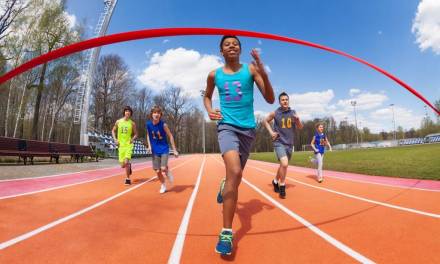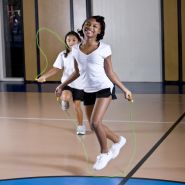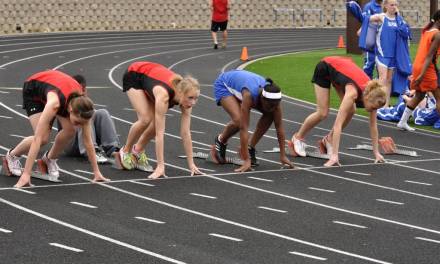It’s easy to overdo things when you’re starting out with a new exercise regime, and youngsters are particularly liable to get over-enthusiastic. Follow our advice to keep students safe and healthy.
If you’ve been following our series on getting kids moving, your students should already have made that all important first step to improving their activity levels.
Now it’s time to build on that, but this should be done safely and injury free.
Easy does it
First, it’s imperative to take things slowly and not overdo it. Exercising too intensely will strain muscles and could lead to injury
It’s during rest periods that the body rebuilds and strengthens muscle, so it’s important to ensure students’ exercise regimes include sufficient break periods.
Sleep is also necessary and it’s best to avoid intensive activity late in the day as this can be disruptive.
Take care when increasing activity
Embarking on a new exercise regime will often initially result in weight loss, which is usually a good thing. But this should be done slowly and never taken to extremes.
Students should be encouraged to keep an eye on their weight and their diet. The usual advice applies: eat a varied diet with lots of fruit and vegetables, never skip breakfast, avoid too much sugar and caffeine.
Complex carbohydrates will provide plenty of slow-release energy to ensure students are properly fuelled for their activities.
Support group
One of the most important messages from this series is that activity shouldn’t start and end with PE lessons – it needs to be part of everyday life.
An excellent way to encourage students to continue exercising outside of the classroom is to get them to work together. Forming pairs or groups means kids can motivate each other and foster healthy competition.
Make a plan
A great way of maintaining momentum is to set goals. These should be realistic, achievable and yet challenging enough to make students feel like they’re making progress.
Signing up to a sporting event can give kids something concrete to work towards. This could be anything from an end-of-term tournament to a county or even national competition.
Help your students draw up a timetable incorporating long and short exercise sessions along with rest periods. Then get them to write a diary about how they got on with their schedule; they can share this in class.
Have fun!
Probably the most important thing to keep in mind is that increasing activity should be enjoyable.
If your students are feeling unhappy or anxious they won’t continue and won’t reap the many benefits of an active lifestyle.
Encourage your students to talk about how their activities make them feel, both good and bad. Ask them why they think they feel this way and what they might do to maximise the good and minimise the bad.
Try to identify exercise that kids enjoy – kicking a ball around a muddy field in a cold January is not everyone’s idea of fun, so maybe try an indoor yoga session instead.
You could even get the kids to nominate their own favourite activities; letting children take responsibility in this way is hugely empowering for them and will help maintain their interest.
Why not share in the comments your ideas for making exercise fun?
Rebecca has been a writer and editor for almost 20 years. She writes on a huge range of subjects, concentrating on sport, nature, mental health, and crafts.










